Abstract
Human peripheral leukocytes were found to engulf and kill cells of Cryptococcus neoformans. Fewer encapsulated than nonencapsulated cells met this fate, since cryptococcal capsular polysaccharide inhibited phagocytosis. During 10 to 12 hr of incubation of nonencapsulated cells in human serum, sufficient polysaccharide was produced to inhibit phagocytosis by 50%. The polysaccharide inhibitor was found in the sera of four patients with cryptococcosis, but not on the surfaces of their leukocytes. Additional experiments indicated that serum is not essential for effective phagocytosis. However, normal human serum contains anticryptococcal activity which is not inhibited by capsular material. Preliminary findings indicate that the phagocytic index of a patient with cryptococcosis may be correlated with the severity of his disease.
Full text
PDF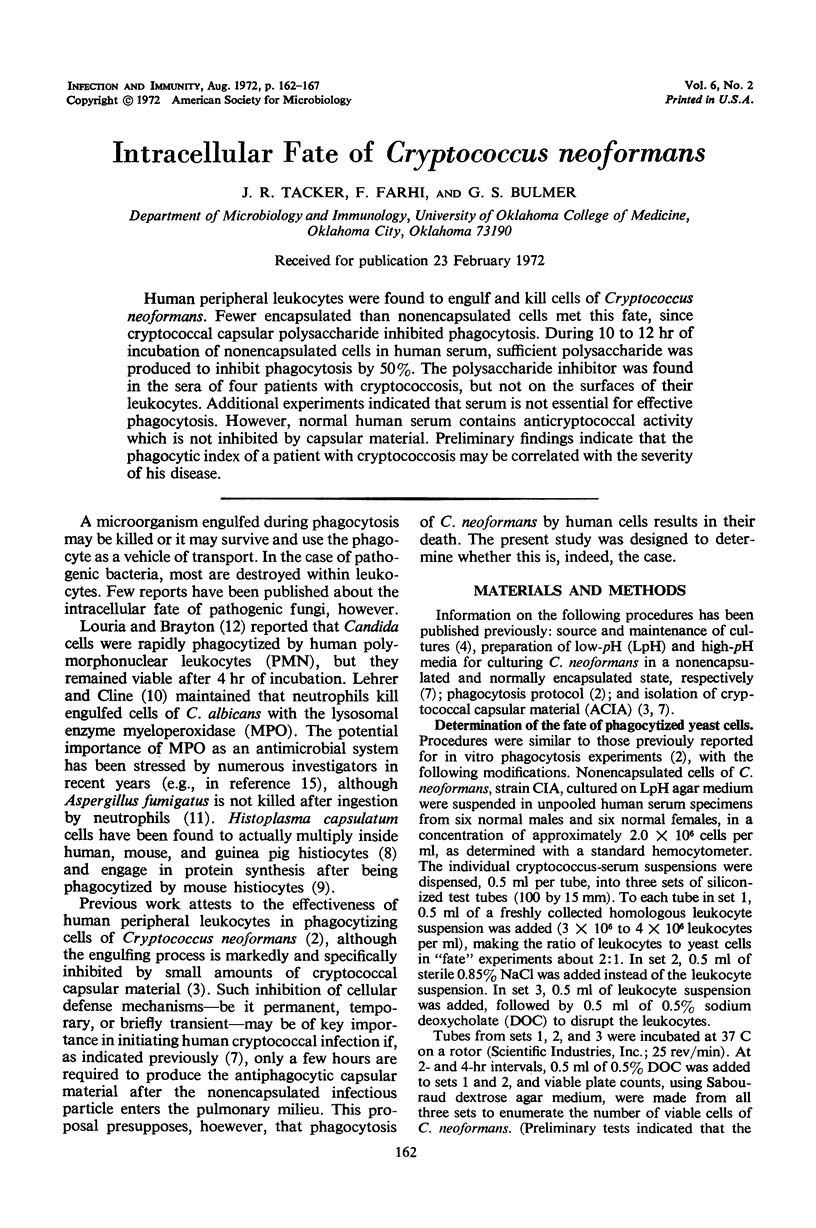
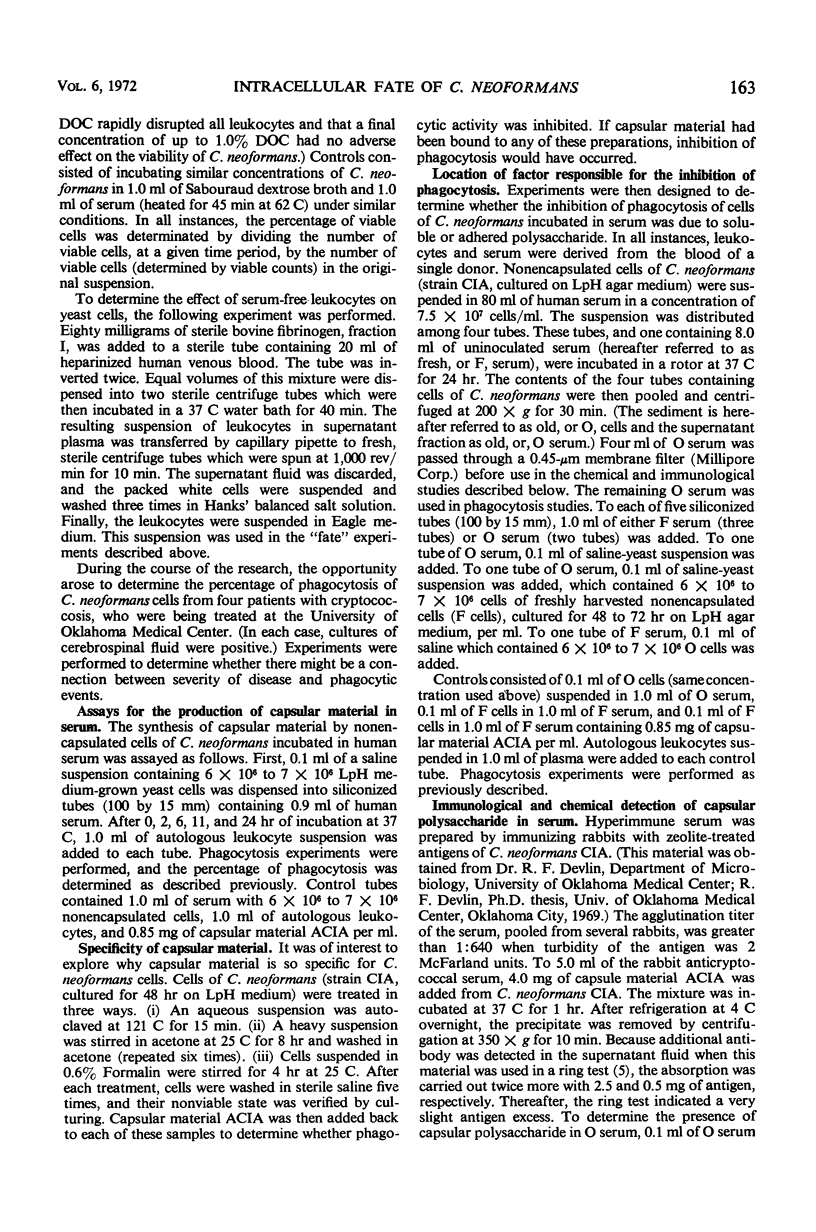
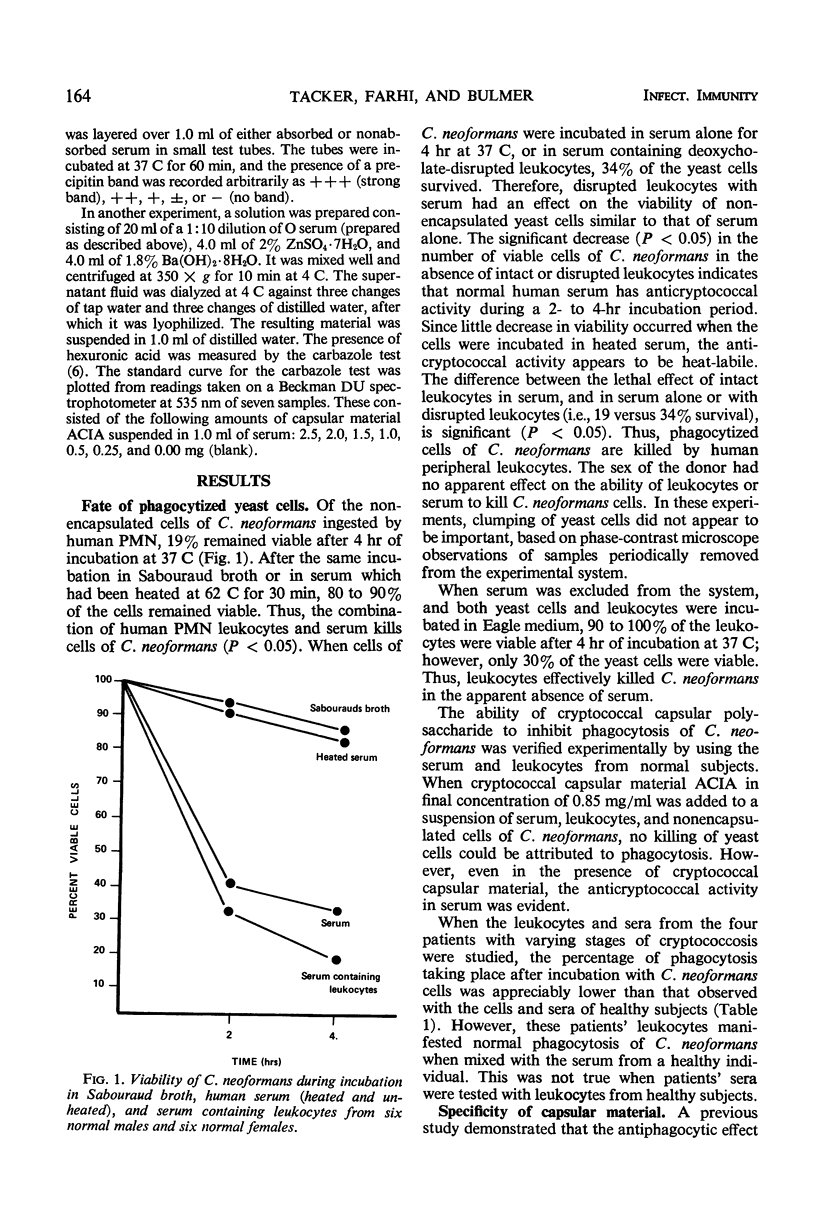
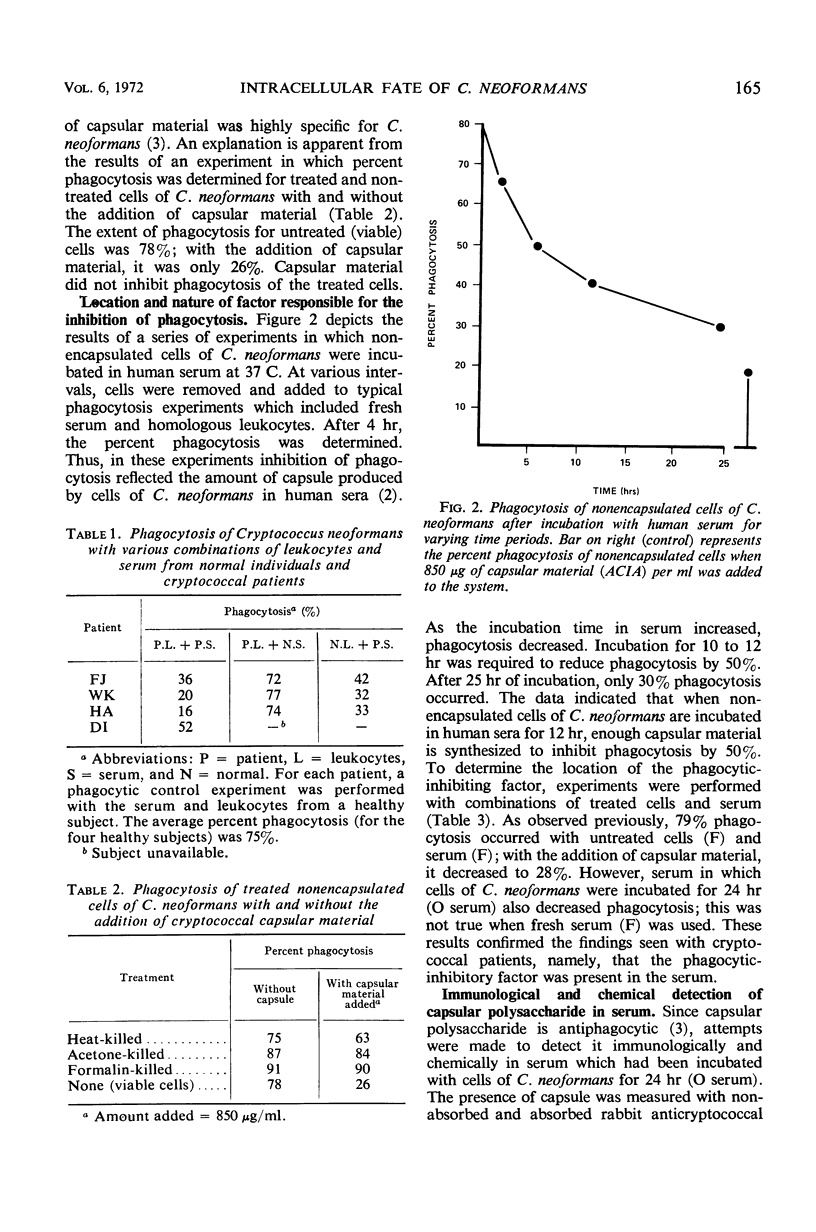
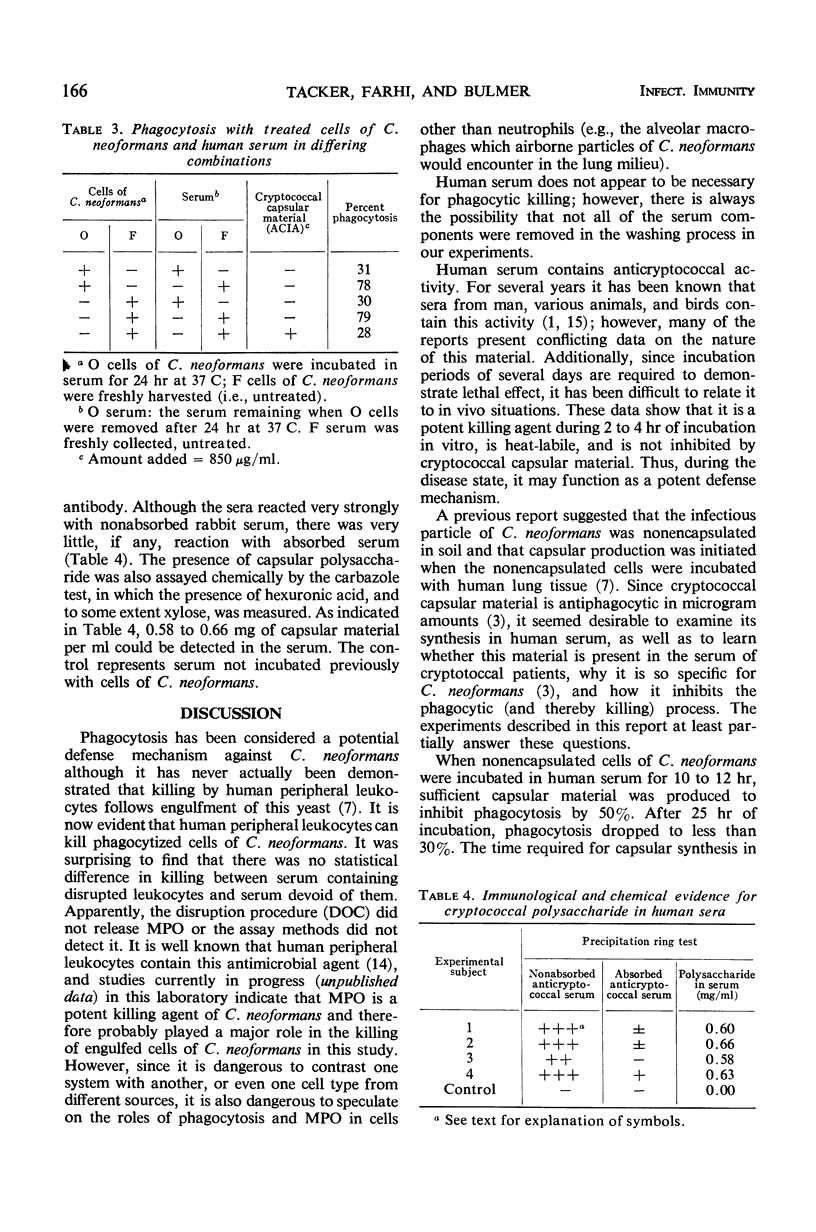
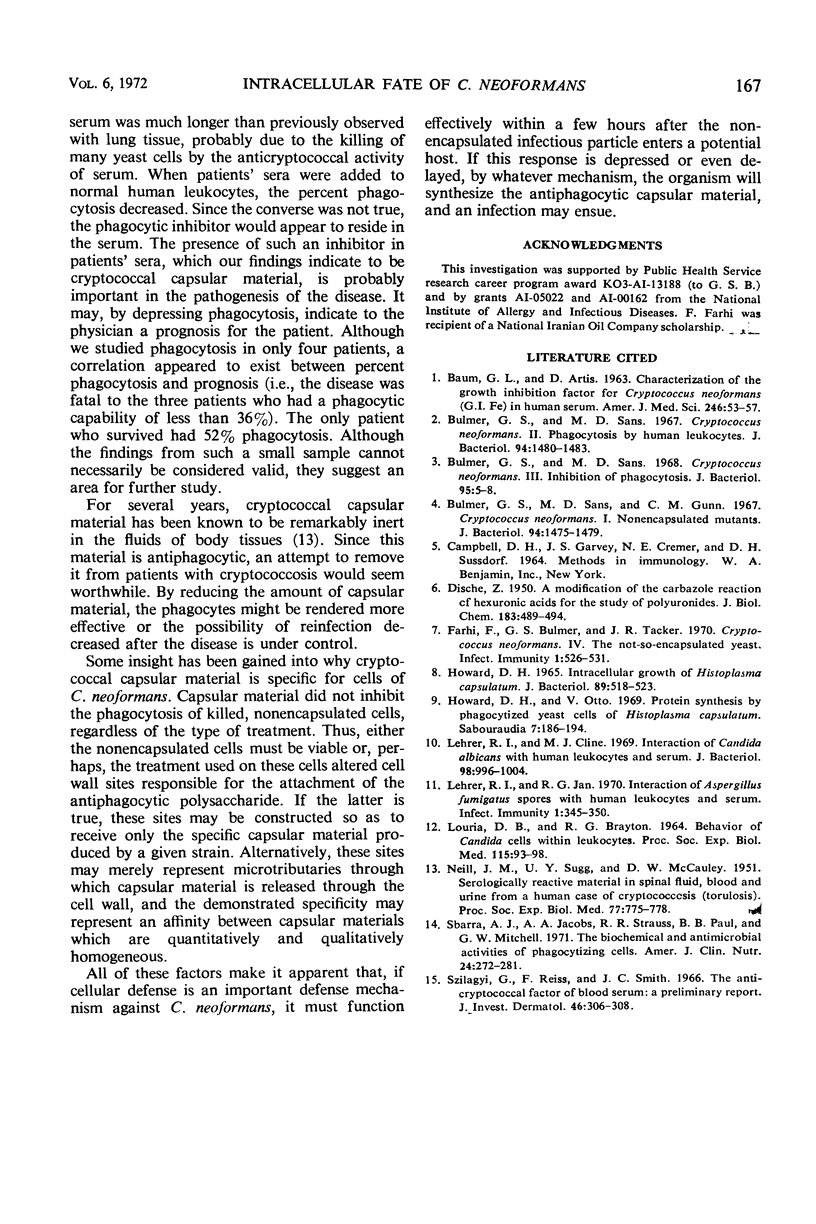
Selected References
These references are in PubMed. This may not be the complete list of references from this article.
- BAUM G. L., ARTIS D. CHARACTERIZATION OF THE GROWTH INHIBITION FACTOR FOR CRYPTOCOCCUS NEOFORMANS (GIFC) IN HUMAN SERUM. Am J Med Sci. 1963 Jul;246:53–57. doi: 10.1097/00000441-196307000-00007. [DOI] [PubMed] [Google Scholar]
- Bulmer G. S., Sans M. D. Cryptococcus neoformans. 3. Inhibition of phagocytosis. J Bacteriol. 1968 Jan;95(1):5–8. doi: 10.1128/jb.95.1.5-8.1968. [DOI] [PMC free article] [PubMed] [Google Scholar]
- Bulmer G. S., Sans M. D. Cryptococcus neoformans. II. Phagocytosis by human leukocytes. J Bacteriol. 1967 Nov;94(5):1480–1483. doi: 10.1128/jb.94.5.1480-1483.1967. [DOI] [PMC free article] [PubMed] [Google Scholar]
- Bulmer G. S., Sans M. D., Gunn C. M. Cryptococcus neoformans. I. Nonencapsulated mutants. J Bacteriol. 1967 Nov;94(5):1475–1479. doi: 10.1128/jb.94.5.1475-1479.1967. [DOI] [PMC free article] [PubMed] [Google Scholar]
- Farhi F., Bulmer G. S., Tacker J. R. Cryptococcus neoformans IV. The Not-So-Encapsulated Yeast. Infect Immun. 1970 Jun;1(6):526–531. doi: 10.1128/iai.1.6.526-531.1970. [DOI] [PMC free article] [PubMed] [Google Scholar]
- HOWARD D. H. INTRACELLULAR GROWTH OF HISTOPLASMA CAPSULATUM. J Bacteriol. 1965 Feb;89:518–523. doi: 10.1128/jb.89.2.518-523.1965. [DOI] [PMC free article] [PubMed] [Google Scholar]
- Howard D. H., Otto V. Protein synthesis by phagocytized yeast cells of Histoplasma capsulatum. Sabouraudia. 1969 Oct;7(3):186–194. [PubMed] [Google Scholar]
- LOURIA D. B., BRAYTON R. G. BEHAVIOR OF CANDIDA CELLS WITHIN LEUKOCYTES. Proc Soc Exp Biol Med. 1964 Jan;115:93–98. doi: 10.3181/00379727-115-28840. [DOI] [PubMed] [Google Scholar]
- Lehrer R. I., Cline M. J. Interaction of Candida albicans with human leukocytes and serum. J Bacteriol. 1969 Jun;98(3):996–1004. doi: 10.1128/jb.98.3.996-1004.1969. [DOI] [PMC free article] [PubMed] [Google Scholar]
- Lehrer R. I., Jan R. G. Interaction of Aspergillus fumigatus Spores with Human Leukocytes and Serum. Infect Immun. 1970 Apr;1(4):345–350. doi: 10.1128/iai.1.4.345-350.1970. [DOI] [PMC free article] [PubMed] [Google Scholar]
- NEILL J. M., SUGG J. Y., McCAULEY D. W. Serologically reactive material in spinal fluid, blood, and urine from a human case of cryptococcosis (torulosis). Proc Soc Exp Biol Med. 1951 Aug;77(4):775–778. doi: 10.3181/00379727-77-18924. [DOI] [PubMed] [Google Scholar]
- Sbarra A. J., Jacobs A. A., Strauss R. R., Paul B. B., Mitchell G. W., Jr The biochemical and antimicrobial activities of phagocytizing cells. Am J Clin Nutr. 1971 Feb;24(2):272–281. doi: 10.1093/ajcn/24.2.272. [DOI] [PubMed] [Google Scholar]
- Szilagyi G., Reiss F., Smith J. C. The anticryptococcal factor of blood serum. A preliminary report. J Invest Dermatol. 1966 Mar;46(3):306–308. doi: 10.1038/jid.1966.47. [DOI] [PubMed] [Google Scholar]


